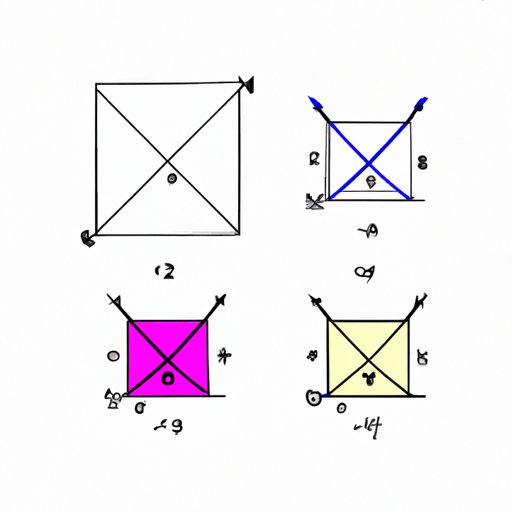I. Introduction
Direct variation functions are an important concept in mathematics that describe a linear relationship between two variables. Identifying them from tables is crucial in solving real-world problems and making data-driven decisions. In this article, we will explore the characteristics of direct variation functions and provide a comprehensive guide on how to identify them from tables.
II. Breaking Down Direct Variation Functions: How to Identify Them from Tables
To understand direct variation functions, we must first examine their characteristics. Direct variation functions are linear functions that satisfy the formula y = kx, where k is a constant of proportionality. In other words, as x increases, y also increases at a constant rate.
The formula for direct variation functions is an essential tool to identify them from tables. By examining the ratios of the y-values and x-values in the table, we can determine if there is a constant proportionality between them. Furthermore, the slope of the line on a graph of a direct variation function is constant.
Here are some examples of direct variation functions and their tables:
| x | y |
|---|---|
| 1 | 2 |
| 2 | 4 |
| 3 | 6 |
In this table, we see that the ratio of y-values to x-values is always 2:1, indicating that it is a direct variation function with a constant of proportionality of 2.
III. Table Comparison: Determining Direct Variation Functions
Identifying patterns in tables is a useful technique to determine which functions they represent. Direct variation functions have distinct patterns that set them apart from other types of functions.
For example, exponential functions have a constant ratio between successive values, whereas quadratic functions have a constant second difference between successive values. By comparing the pattern in the table with these standard patterns, we can identify which function it represents.
Let’s examine a real-world example. Suppose we are given a table of distances traveled by a car at a constant speed:
| Time (hours) | Distance (miles) |
|---|---|
| 1 | 60 |
| 2 | 120 |
| 3 | 180 |
By examining the table, we can see that the ratio between the distances traveled and the time elapsed is constant. Therefore, this is a direct variation function with a constant of proportionality of 60.

IV. Table Analysis: Spotting Direct Variation Functions With Ease
Using graphical representations can also help us identify direct variation functions. The slope of the line on a graph of a direct variation function is constant, as mentioned earlier. Therefore, if we plot the values from the table on a graph, we can easily spot direct variation patterns.
Finding the constant of variation in a table is also a crucial step in identifying direct variation functions. It is simply the ratio between any two corresponding values of the x and y variables.
Here are some tips and tricks to help you analyze tables and identify direct variation functions:
- Look for a constant ratio between the y-values and x-values
- Plot the points on a graph and look for a straight line
- Calculate the constant of variation and check if it is the same for all the points in the table
V. Cracking the Code: Identifying Direct Variation from Tables
Practice problems are an excellent way to improve your skills in identifying direct variation functions from tables. To help you better understand this concept, let’s solve a few practice problems:
| x | y |
|---|---|
| 2 | 0.8 |
| 5 | 2 |
| 8 | 3.2 |
By examining the table, we can see that the ratio of y-values to x-values is always 0.4:1. Therefore, this is a direct variation function with a constant of proportionality of 0.4.
Common mistakes when identifying direct variation functions include mistaking them for linear functions and assuming that the equation must be in y = mx + b form.
VI. Directly Proportional Tables: A Guide to Recognizing the Relationship
Directly proportional tables are a type of direct variation function that describes a relationship between two variables that are directly proportional to each other. In other words, as one variable increases, the other also increases at a constant rate.
Here is an example of a directly proportional table:
| x | y |
|---|---|
| 4 | 20 |
| 6 | 30 |
| 8 | 40 |
In this table, we can see that as x doubles, y also doubles. This is the hallmark of a directly proportional table.
VII. Table Talk: Understanding Direct Variation Functions and Their Characteristics
In summary, direct variation functions are an essential concept in mathematics and real-world applications. Identifying them from tables is crucial to making data-driven decisions and solving problems.
By understanding the characteristics of direct variation functions, comparing patterns in tables, and using graphical representations and analytical techniques, we can spot direct variation functions with ease. Practice makes perfect when it comes to recognizing these patterns.
Understanding the relationship between direct variation and proportionality is also helpful in recognizing patterns in directly proportional tables.
We hope this comprehensive guide has provided you with the tools and tips necessary to identify direct variation functions from tables with ease.
